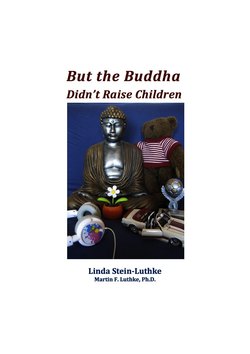Читать книгу But the Buddha Didn't Raise Children - Linda Stein-Luthke - Страница 3
На сайте Литреса книга снята с продажи.
Foreword The Middle Path
ОглавлениеPrince Siddhartha, the Buddha who founded the Buddhist religion, was not the first Buddha. Hinduism refers to “the Buddhi within” as a core of Light that one must seek in order to attain enlightenment. Hinduism had existed for approximately two thousand five hundred years prior to the birth of Prince Siddhartha, who would ultimately become the Buddha who showed us “the middle path” to enlightenment.
As a young man, Siddhartha was not interested at all in enlightenment. He was to inherit a wealthy kingdom in northern India. Born the only son of a doting father, he was raised by caring servants since his mother had died shortly after his birth. His life was filled with beauty, music, abundance of every kind and loving people. His father made sure that he was totally protected from the harshness of the outside world.
But after becoming the father of a young son, the prince became curious to finally learn about the rest of the world. Early one morning, while everyone was still sleeping, Siddhartha escaped the palace guards and ventured into the streets of the city with his favorite servant by his side. There he saw death, sickness, and poverty. He asked his servant how such things could be. His servant told him this was the way most people lived.
Siddhartha was stunned by the suffering he witnessed and returned to the palace where all the discomfort of life had been banished. He knew he could no longer live in the palace. He must find an answer to the suffering he had seen. After kissing his sleeping wife and child, he left his home, never to return. His journey to awakening had begun.
Outside the city walls, he encountered a group of Hindu ascetics sitting in meditation in the countryside. They were unwashed, starving, and many distorted their bodies or harmed themselves in other ways in order to meditate above and beyond all physical discomfort. In this way they hoped to achieve ultimate enlightenment by transcending suffering. Siddhartha eagerly joined them, convinced he could find the answer that could alleviate all suffering in the world.
After many months -- and some sources say it was years -- of practicing this form of meditation, he underwent an amazing realization. The legends vary, but the one I've liked the best is he chose to go bathe in the river and clean his body. After his bath a young maiden came by and offered him a bowl of rice which he happily ate.
Siddhartha returned to the ascetics and said he'd decided to try a new path to enlightenment. This path would involve caring for his body while he meditated since it was part of creation and deserved to be cared for. The other ascetics thought this idea was blasphemous. So, he went alone to sit under a nearby Bodhi tree. Some say the tree still exists and many come to worship there.
Within a certain amount of time the spirit of Mara came to him. Mara offered him all forms of temptation and then frightened him in every way possible. But still Siddhartha sat. He sat until he'd conquered all fears and temptations through deep meditation. He had become a Buddha.
Siddhartha went back to the ascetics and said he'd found “the middle path” to awakening. He invited them to join him in sharing this good news. Suffering could cease. Enlightenment was possible. Some of the ascetics joined him and became his first disciples.
My husband, Martin and I have been to Sarnath in northern India, which is the site of the first Buddhist Temple, convent, and monastery. This is where the Buddha first preached the dharma, his message of enlightenment, to his disciples.
The place is filled with peace and beauty. Sarnath is where I finally knew deep inside me that Buddhism was a teaching that I could follow. It all begins within as we sit, release our fears and need to suffer, and open to our Light. It can be a place of beginning for each one of us, if we allow.
== ::: ==
